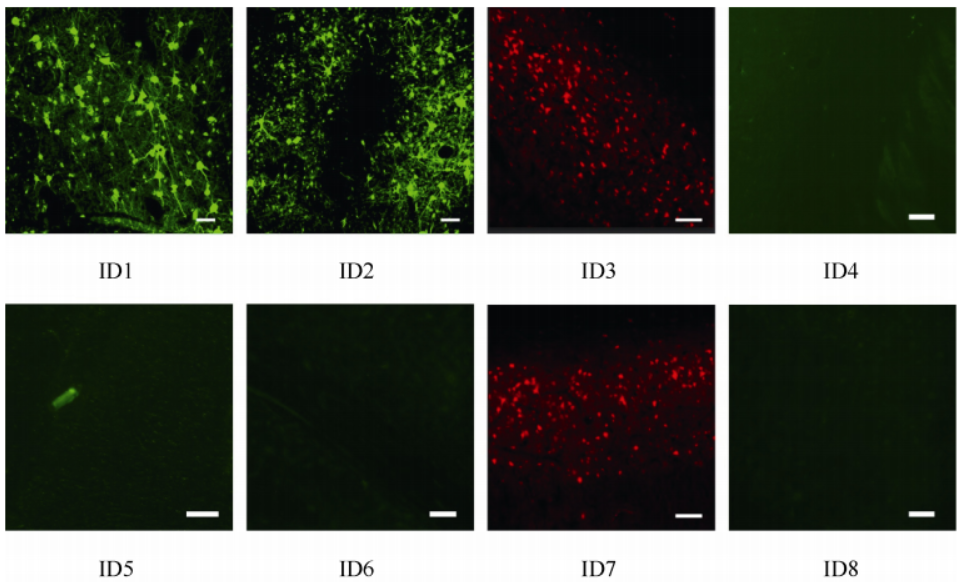AAV-mCherry was used as commonly used viral vectors to compare the transfection efficiency. (From
BrainVTA)
The viruses used from BrainVTA in this article are in the table below
|
Control |
AAV2/9-hSyn-mCherry
AAV2/9- CaMKII-mCherry |
Shi-Hao Wu, Zhi-Xing Liao, Joshua D Rizak, Na Zheng, Lin-Heng Zhang, Hen Tang, Xiao-Bin He, Yang Wu, Xia-Ping He, Mei-Feng Yang, Zheng-Hui Li, Dong-Dong Qin, Xin-Tian Hu
Pub Date: 2017-04-15,
DOI: 10.24272/j.issn.2095-8137.2017.015,
Email: sales@brainvta.com
Viral vector transfection systems are among the simplest of biological agents with the ability to transfer genes into the central nervous system. In brain research, a series of powerful and novel gene editing technologies are based on these systems. Although many viral vectors are used in rodents, their full application has been limited in non-human primates. To identify viral vectors that can stably and effectively express exogenous genes within non-human primates, eleven commonly used recombinant adeno-associated viral and lentiviral vectors, each carrying a gene to express green or red fluorescence, were injected into the parietal cortex of four rhesus monkeys. The expression of fluorescent cells was used to quantify transfection efficiency. Histological results revealed that recombinant adeno-associated viral vectors, especially the serotype 2/9 coupled with the cytomegalovirus, human synapsin I, or Ca2+/calmodulin-dependent protein kinase II promoters, and lentiviral vector coupled with the human ubiquitin C promoter, induced higher expression of fluorescent cells, representing high transfection efficiency. This is the first comparison of transfection efficiencies of different viral vectors carrying different promoters and serotypes in non-human primates (NHPs). These results can be used as an aid to select optimal vectors to transfer exogenous genes into the central nervous system of non-human primates.
 Figure 1. Expression of eGFP (ID1, ID2, ID4, ID5, ID6 and ID8) or mCherry (ID3 and ID7) using different viral vectors injected into the parietal cortex of the rhesus monkeys.
Figure 1. Expression of eGFP (ID1, ID2, ID4, ID5, ID6 and ID8) or mCherry (ID3 and ID7) using different viral vectors injected into the parietal cortex of the rhesus monkeys.
In the present study, the authors compared commonly used AAV and lentiviral vectors with different promoters and serotypes in the parietal cortex of rhesus monkeys to determine the optimal vector to deliver transgenes into the neocortex of NHPs. Eight commonly used AAV vectors and three lentiviral vectors with different promoters and serotypes were used.
BrainVTA offers viral vector construction & virus packaging services for AAV, LV, RABV, PRV, HSV and VSV that help researchers explore questions about genes, neurons, circuitry structure, function of brain network, mechanism and treatment of diseases.
If you have any needs, just email us at
sales@brainvta.com.
